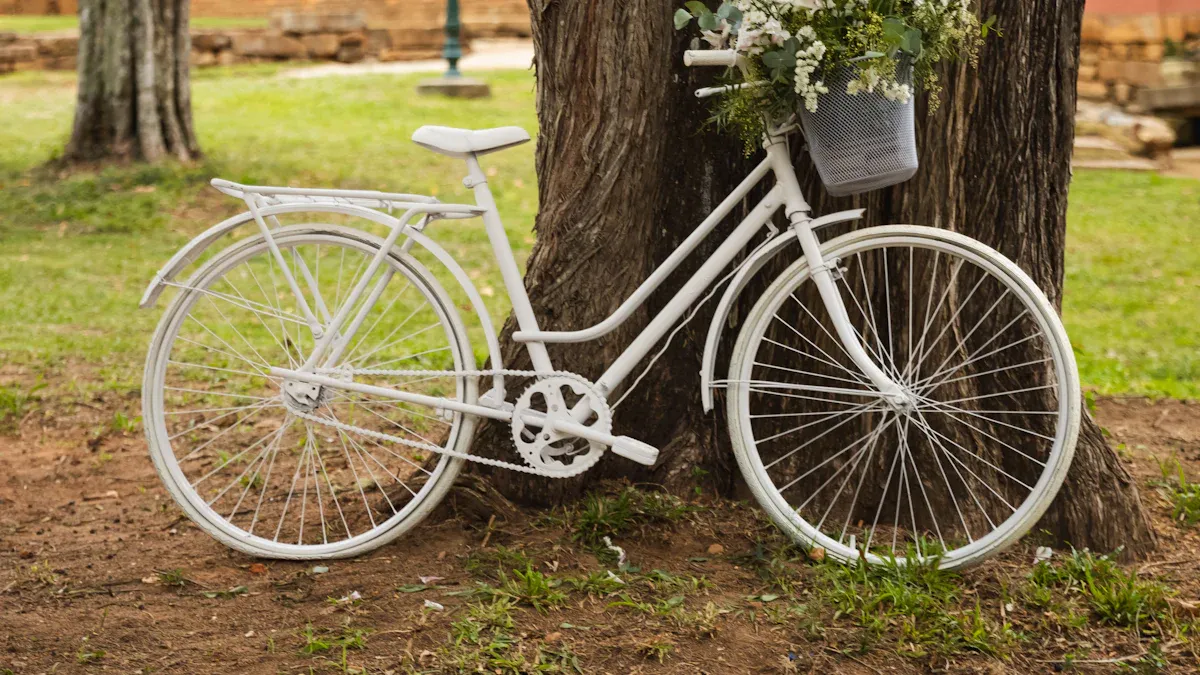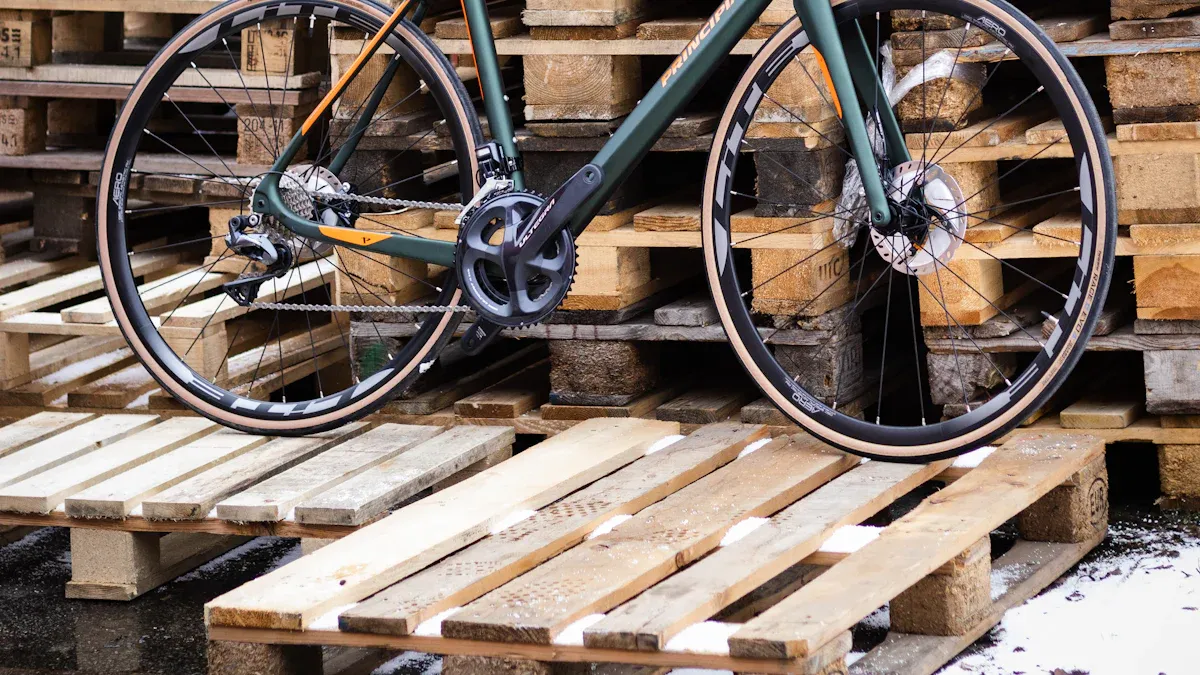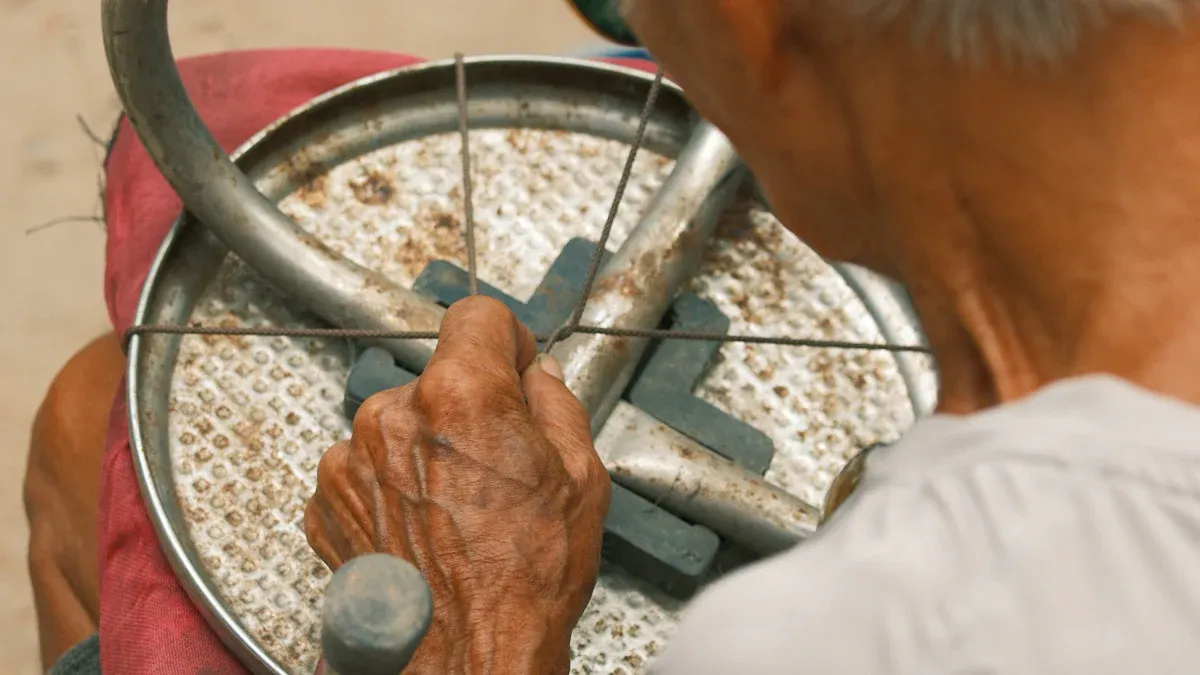
Have you ever thought about how exciting it is to build your own bike frame? Making a plywood bike frame lets you create something special. Plywood is easy to find and gives you a strong base for your project. Also, making a DIY wooden bike can be fun and rewarding. Picture riding a bike that you made yourself. It will catch people’s eyes with its unique style. You will enjoy a smooth ride because of the frame’s natural suspension system.
Key Takeaways
Pick strong plywood like birch or Baltic birch. This helps with strength and lasting use.
Cut and sand carefully. This makes clean edges and a smooth surface.
Plan your frame for comfort and balance. This makes your ride better.
Use paint or sealant to protect and make it look nice.
Check your bike frame for safety before riding. This makes sure it is safe and works well.
Materials for Plywood Bike Frame

When you start to build a plywood bike frame, picking the right materials is very important. The quality of your plywood and tools can change how good your bike frame turns out. Let’s look at the details.
Choosing Plywood
Picking the right plywood is key for making a strong bike frame. Here are some types you might want to use:
Birch plywood: This type is strong and good for the environment. Many DIY fans like it.
Laminated plywood: It is stable but can make your frame heavier.
Baltic birch: This is very durable, but watch out for cheaper kinds that may break easily.
You can also make your plywood bike frame better by using resin. This helps protect it from water damage. You might want to use steam-bent wood for a cool look or an open frame design to make it lighter.
Essential Tools
To build your plywood bike frame, you will need some important tools. Here’s a simple table showing the tools and their costs:
Tool Description | Estimated Cost |
|---|---|
Victor torch, hoses, and two stage regulators | $300 |
Bringheli frame jig | $1350 |
Bringheli fork jig | $375 |
Nova fork raking tool | $375 |
Icetoolz BB tapping and facing set | $250 |
Icetoolz headtube facer and reamer | $250 |
These tools will help you make your bike frame precise and high quality. Spending money on good tools is worth it. They will help your plywood bike frame look good and work well.
When bonding the plywood, using the right epoxy is very important too. Think about these options:
Loctite 3050 Structural Adhesive: This glue works well in high heat.
Marine grade West System epoxies: These are known for being strong and effective.
With the right plywood and tools, you are ready to create a special plywood bike frame that looks great on the road.
Plywood Preparation
Getting your plywood ready is an important step. This helps you make a strong and nice-looking plywood bike frame. You need to make sure your cuts are clean and your surfaces are smooth. Let’s look at how to cut and sand the plywood.
Cutting Techniques
When cutting plywood, you want to avoid splintering. You also want to make sure the frame parts fit well. Here are some good techniques to use:
Technique | Description |
|---|---|
Utilizing Zero Clearance Inserts | This gives support to the plywood fibers near the blade. It helps reduce tear-out and chip-out. |
Minimizing Chip-Out and Tear-Out | Put masking tape along the cut line. Score it with a utility knife to stop tear-out. |
Use Saw Guides for Straight Cuts | Saw guides help you make straight and accurate cuts with a circular saw. |
Selecting the Appropriate Saw | Pick the right saw based on how complex the cut is, the plywood thickness, and what you like. |
Adjusting Blade Height and Depth | Adjustments help reduce tear-out and make smooth cuts. |
By using these techniques, you can prepare your plywood well. This sets a strong base for your bike frame.
Sanding and Smoothing
After cutting, it’s time to sand your plywood. This makes the surface smooth. A well-sanded frame looks better and feels better to ride. Here’s a simple sanding process:
Start with 80 grit to get rid of rough edges.
Move to 120 grit to smooth the surface.
Use 150 grit for more preparation.
Follow with 180 grit to refine the surface.
Finish with 220 grit for a very smooth finish.
This process helps you get a strong surface ready for finishing.
After sanding, think about treating your plywood with a sealant. Wood sealants protect against moisture and UV rays. This is important for keeping your bike frame strong. Here are some options:
Water-Based Sealers: Easy to use and good for the environment, but not very durable.
Oil-Based Sealers: Great for moisture protection but can give off harmful fumes.
Wax-Based Sealers: Good for moisture protection but need to be reapplied often.
Doing these steps will make sure your plywood bike frame is not only nice but also built to last.
Assembling the Wooden Framed Bike

Building your plywood bike frame is a fun step! Now, let’s look at how to put it together. You should think about the design basics and the best ways to join parts. This will help make your frame strong and safe.
Frame Design Basics
Before you start putting things together, think about how your frame will look. A good frame not only looks nice but also rides well. Here are some important things to think about:
Ergonomics: Make sure your frame fits the rider’s height and weight. A good fit is very important for comfort. This is especially true for taller and heavier riders. Change parts like cranks, handlebars, and wheels to fit different sizes.
Layering: When you design your frame, think about using many layers of plywood. This helps you change the grain direction, which makes it stronger in different ways. For example, using eight layers of plies with certain directions can help handle stress better.
Weight Distribution: Think about how weight is spread across the frame. A balanced frame helps with handling and stability.
Joining Techniques
Now that you have a design, it’s time to join the parts. Good joining techniques are very important for making a strong plywood bike frame. Here’s how to begin:
Initial Glue-Up and Alignment: Start by carefully lining up your plywood pieces. Use these tips to stop warping or misalignment:
Board Orientation: Alternate the growth rings in a ‘smile-frown-smile’ pattern. This helps balance tension and stops warping.
Edge Jointing: Use a jointer or hand plane to make smooth, square edges. This step is very important to avoid cracks later.
Glue Selection: Pick the right glue for your project. For indoor frames, PVA glue is good. For outdoor use, think about polyurethane or epoxy for more strength.
Clamping Tips: Use clamps above and below the panel. You can use cauls to spread pressure evenly when gluing.
Laminating Layers: Laminating strips of wood makes it stronger and more flexible. This method lowers the chance of cracking along grain lines. You can even make your frame stronger by adding materials like Kevlar or carbon fiber in areas that need it.
By following these design basics and joining techniques, you’ll make a strong and reliable plywood bike frame. Remember, this assembly part is where your creativity can shine, so feel free to try different designs and methods!
Final Touches and Adjustments
Now that you’ve assembled your plywood bike frame, it’s time for the final touches! This part is all about making your bike look great and ensuring it’s safe to ride. Let’s dive into painting options and the essential safety checks you should perform.
Painting and Finishing
Painting your plywood bike frame can really bring it to life! Here are some popular options to consider:
Custom Paint Jobs: You can express your personality with unique designs. A fresh coat of paint not only looks good but also protects against wear and tear, enhancing durability.
Clear Frame Protection: Applying a clear coat helps maintain the integrity of your paint job. This way, your bike stays looking sharp while being shielded from scratches and moisture.
When choosing paint, consider using high-quality outdoor paint. It will withstand the elements better and keep your bike looking fresh for longer.
Installing Components
Once your frame is painted and finished, it’s time to install the components. Make sure you follow these steps:
Attach the Fork and Handlebars: Ensure everything is aligned properly for a smooth ride.
Install the Wheels: Check that the wheels spin freely and are securely attached.
Add the Seat: Adjust the height for comfort. You want to be able to reach the pedals easily.
Before you take your new wood bicycle for a spin, perform these crucial safety checks:
Rust: Look for rust, especially in areas exposed to water, like the seat tube and bike chain.
Dents and Bends: Inspect for any dents or bends that could compromise the frame after a crash.
Cracks: Check for cracks in high-stress areas, as these can severely affect structural integrity.
Scratches: While often minor, inspect scratches around critical areas like the head tube.
By following these steps, you’ll ensure your plywood bike frame is not only stylish but also safe for riding. Enjoy the thrill of riding a bike you built yourself!
Building your own plywood bike frame is an exciting journey! You’ve learned to choose the right materials, prepare your plywood, assemble the frame, and add the finishing touches. Here’s a quick recap of the key steps:
Select quality plywood and tools.
Cut and sand the plywood for a smooth finish.
Design and join the frame carefully.
Paint and install components for a polished look.
Don’t let challenges like alignment issues or cutting difficulties discourage you. Many builders have faced these hurdles but found the experience rewarding. They described it as an adventure, leading to a fully functional bike made from wood and glue.
So, why not give it a try? Share your experiences and creations with others. There’s nothing quite like the joy of riding a bike you built yourself! 🚴♂️
FAQ
What type of plywood is best for a bike frame?
For a bike frame, birch plywood is a good choice. It is strong and good for the environment. Baltic birch is also tough but can cost more. Stay away from low-quality plywood to keep it safe and lasting.
How do I ensure my cuts are accurate?
To make accurate cuts, use a saw guide for straight lines. You can also use zero clearance inserts to reduce splintering. Always measure twice before cutting to prevent mistakes.
Can I paint my plywood bike frame?
Yes! You can paint your plywood bike frame to show your style. Use high-quality outdoor paint for better durability. A clear coat can protect the paint and make it look nicer.
How long does it take to build a plywood bike frame?
The time needed varies based on your skills and design. Usually, you can expect to spend a few days to a week on the whole project, including prep and finishing.
Is it safe to ride a plywood bike frame?
Yes, a well-made plywood bike frame can be safe to ride. Just make sure to follow good assembly methods and do safety checks before riding. Regular care will keep it in good condition.
See Also
Simple Methods for Building a Bamboo Bicycle Frame
The Trials and Triumphs of Crafting a Wooden Bicycle Frame
Key Tools and Supplies Needed for Your Bicycle Frame
